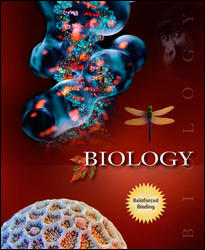 
Biology, Eighth Edition (Raven)Chapter 24:
Genome EvolutionLearning OutcomesChapter 24
- Know what the term genome means and what it means to science to have elucidated a complete genome of a species.
- Understand why researchers have honed in on conserved DNA sequences between other vertebrates and humans.
- Describe why even though mice and humans share 99% of their genes, there are so many differences between the species.
- Know how chromosomal rearrangement can lead to the evolution of new species.
- Understand the mechanism of how an herbicide, which is used to kill weeds, might be used to kill the protist, Plasmodium.
- Be able to explain the new field of biology known as comparative genomics.
- List and give an example of the six different ways in which a genome can change over time.
- Distinguish between ortholog, paralog, and a pseudogene.
- Compare horizontal gene transfer with lateral gene transfer.
- Be able to provide a plausible explanation of why humans have more transposons than Drosophila, even though Drosophila have been around for hundreds of millions of years longer than humans.
- Understand how convergent evolution works when different genes are recruited in different species. Give an example.
 |  |
|





